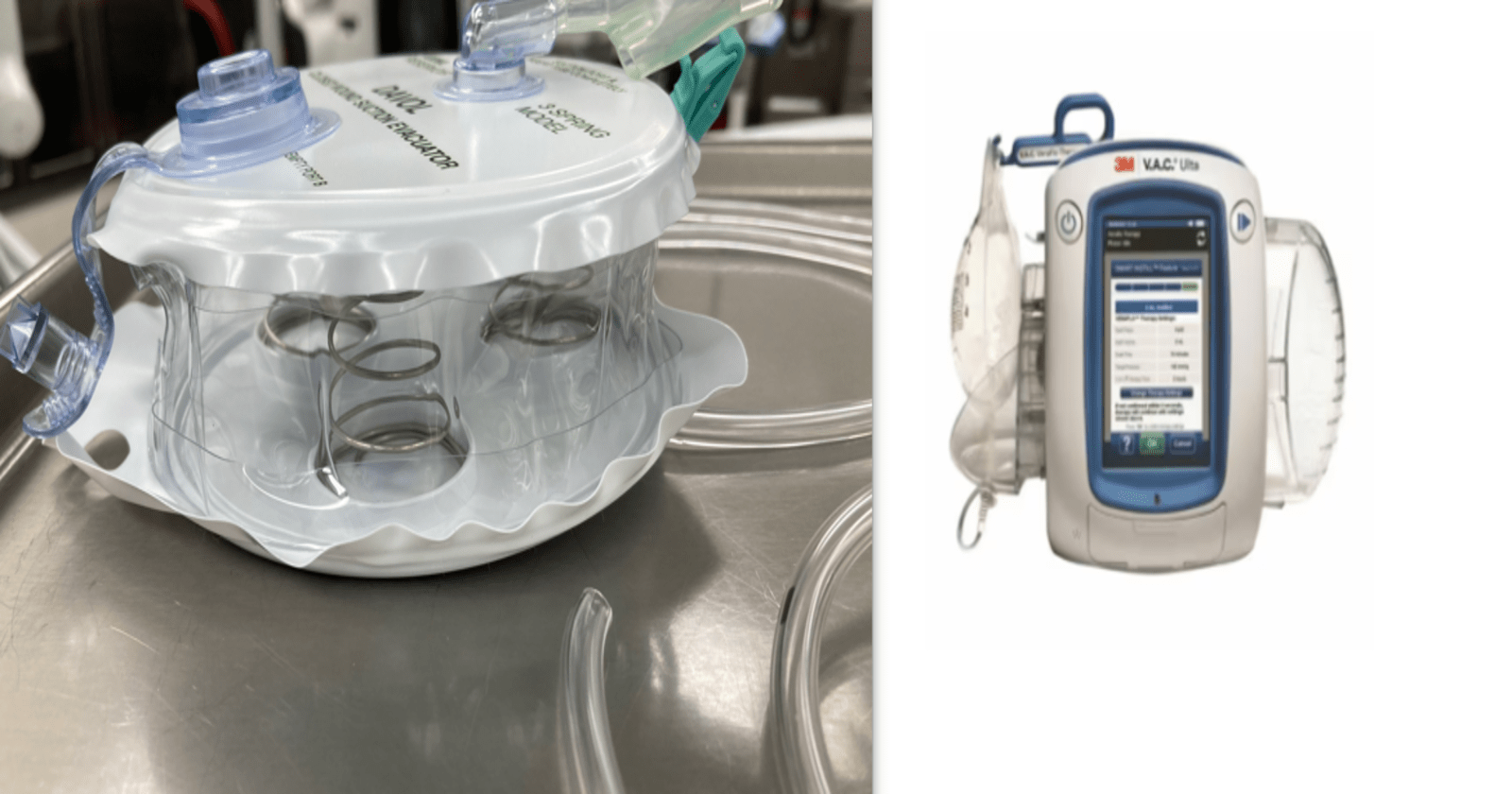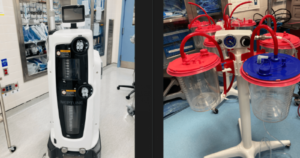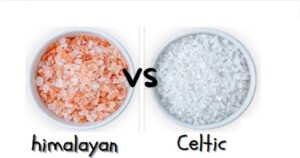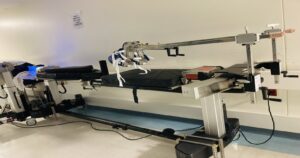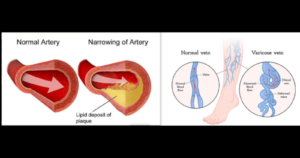A Hemovac drain, classified as a closed suction drain, that is inserted into a surgical wound to facilitate the drainage of blood and fluids while a wound vac functions as a negative pressure device, employing Vacuum-assisted closure as a therapeutic approach to enhance the healing of wounds.
In wound vac treatment, the device reduces the air pressure around the wound, promoting faster healing by extracting the fluid from the wound and enhance the circulation of blood in the affected area.
The hemovac drain when the evacuator is firmly compressed, facilitates the extraction of fluids from the wound.
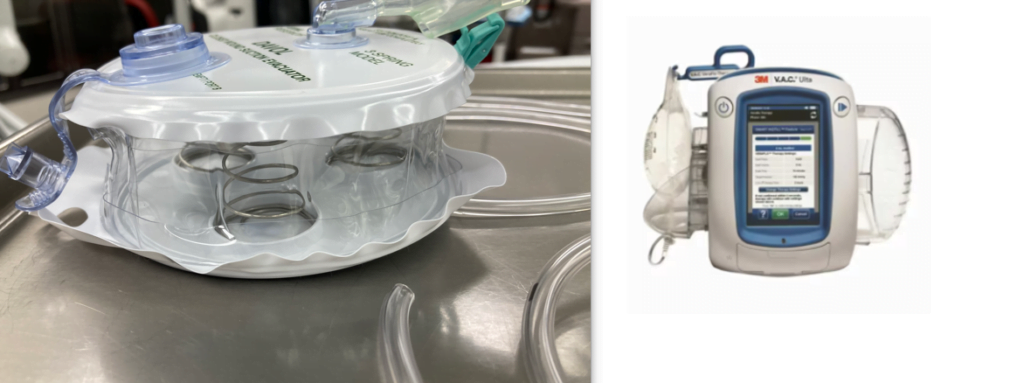
| Hemovac Drain | Wound VAC Therapy |
| Direct wound connection with drainage tube to reservoir. | Vacuum-sealed dressing over wound creates negative pressure. |
| Flexible tube with accordion like reservoir for fluid collection. | Involves a specialized dressing (foam or gauze) placed on the wound, connected to a vacuum pump or suction unit |
| Often used for a shorter duration postoperatively until drainage decreases. | Can be applied for an extended period, depending on the wound’s characteristics and the healing progress. |
| Primarily designed for the removal of blood and other fluids (serous fluid) from surgical sites, reducing the risk of hematoma formation | Focuses on promoting wound healing by creating a controlled environment that facilitates drainage, removes infectious materials, and stimulates tissue growth. |
| Utilizes negative pressure to suction and collect fluids, especially blood, from the wound area. | Applies controlled negative pressure to the wound, promoting drainage, reducing edema, and enhancing tissue perfusion. |
| Used after surgical procedures, particularly those with a risk of significant fluid accumulation like orthopedic surgeries. | Used for a variety of wound types, like chronic wounds, open surgical wounds, traumatic wounds, and pressure ulcers. |
| Dose not use batteries or need charging before use. | works with a rechargeable battery and need charging before use. |
What is a Hemovac ?
A Hemovac is a type of surgical drain that is commonly used in medical settings to remove excess fluids, such as blood or serous fluid, from a surgical site. It is a closed suction drain system that helps prevent the accumulation of fluid at the surgical site, reducing the risk of complications such as infection or hematoma.
This drain is made up of several parts the Evacuator, Evacuator tubing , wound tubing and connector.
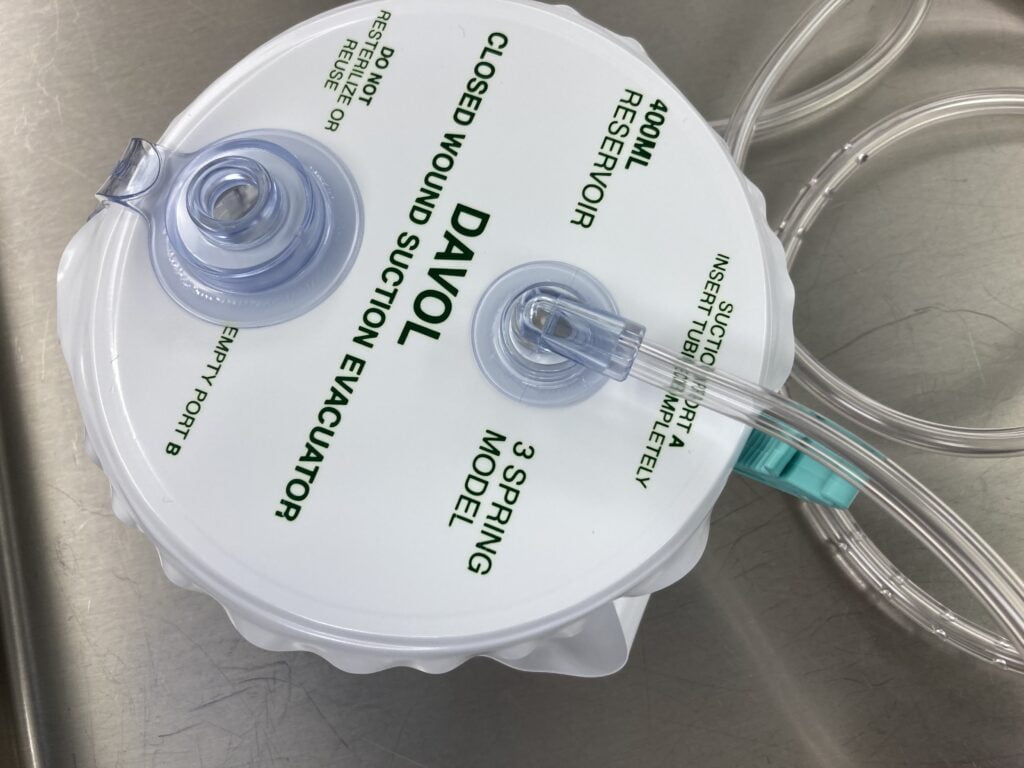

- The Evacuator – When compressing, the device is designed to be tightly squeezed, facilitating the extraction of fluid from the wound. Additionally, the evacuator can retain the fluid until it can be effectively drained.

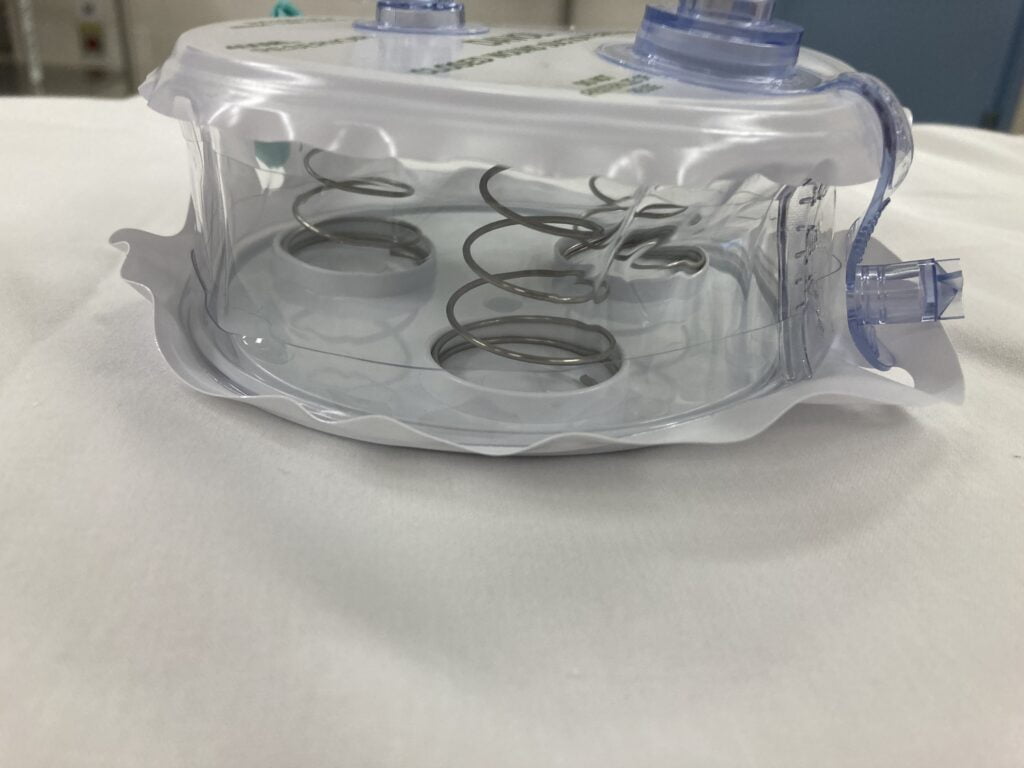
2. The Evacuator tubing is the tubing that links the evacuator to the connector and facilitates the movement of fluids from your surgical wound to the evacuator.
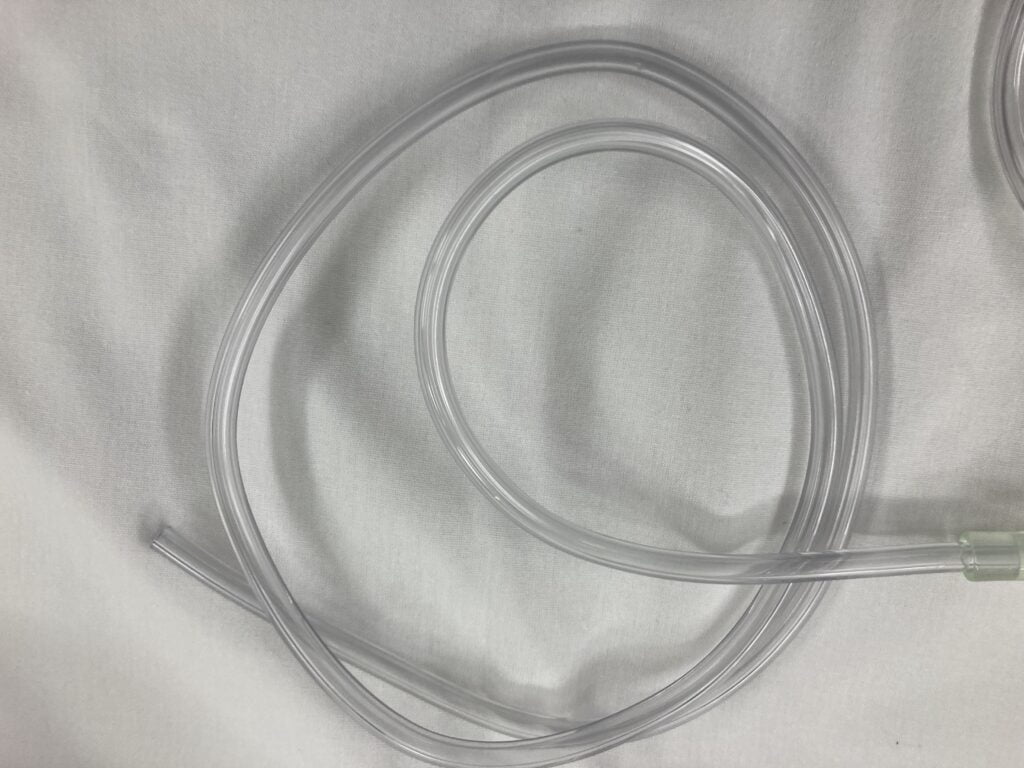
3. The wound tubing, inserted during surgery facilitates the drainage of blood and fluids from the wound into the drainage system.

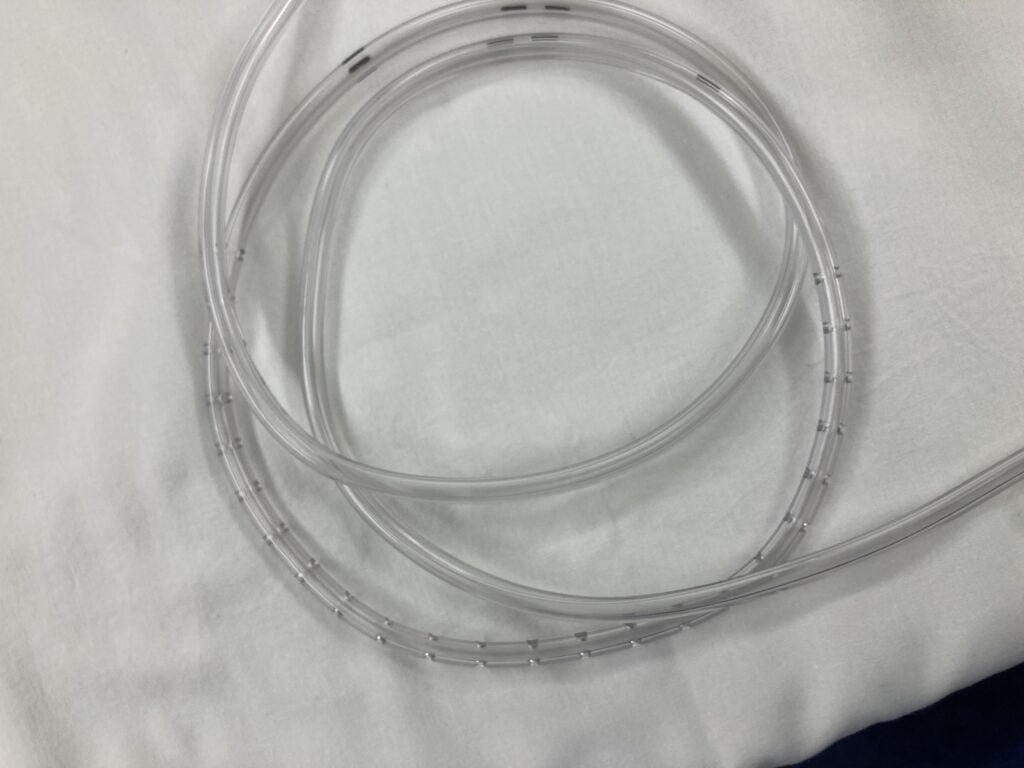
4. The Connector links the evacuation tubing to the tubing for the wound.

8 Uses of Hemovac Drain application
The primary purposes of Hemovac application
- Fluid Evacuation:
- Blood and Serous Fluid Removal: After surgery, there is often a collection of blood and other fluids at the surgical site. The Hemovac is designed to evacuate these fluids, preventing the accumulation that can lead to complications such as hematoma or infection.
- Prevention of Hematoma:
- Hematoma Reduction: Hematomas occur when blood accumulates in a localized area, forming a clot. Hemovac helps to reduce the risk of hematoma formation by continuously removing excess blood from the surgical site.
- Prevention of Infections:
- Fluid Drainage for Infection Prevention: Stagnant fluid at a surgical site can create an environment conducive to bacterial growth, leading to infections. The Hemovac aids in preventing infections by actively draining fluid and maintaining a more sterile environment.
- Reduction of Swelling:
- Edema Control: Surgical procedures often result in tissue trauma and inflammation, leading to swelling. By removing excess fluids, the Hemovac helps control edema, promoting faster healing and reducing postoperative discomfort.
- Enhanced Wound Healing:
- Optimizing Wound Environment: The removal of excess fluids helps create an environment conducive to optimal wound healing. By minimizing swelling and preventing complications like hematomas and infections, the Hemovac supports the natural healing process.
- Patient Comfort:
- Pain Reduction: Accumulation of fluids can increase pressure at the surgical site, causing pain and discomfort for the patient. Hemovac application helps alleviate this pressure, contributing to improved postoperative comfort.
- Monitoring and Assessment:
- Output Measurement: Healthcare professionals can monitor the volume and characteristics of the drained fluid, providing valuable information about the patient’s condition. Changes in fluid color or consistency may indicate potential issues, prompting timely intervention.
- Facilitation of Ambulation:
- Mobility Support: By efficiently draining fluids, the Hemovac can contribute to early patient mobilization. This is important for preventing complications associated with prolonged immobility, such as deep vein thrombosis.
It’s important to note that the use of Hemovac or any other surgical drain is determined by the specific needs of each patient and the nature of the surgical procedure. The application and management of surgical drains are typically under the supervision of healthcare professionals to ensure optimal outcomes for the patient.
Medical conditions or surgical procedures where a Hemovac is used.
- Orthopedic Surgeries:
- Total joint replacement (e.g., hip or knee replacement)
- Spinal surgeries
2. Abdominal Surgeries:
- Abdominal hysterectomy
- Bowel resection
- Gallbladder removal (cholecystectomy)
- Appendectomy

3. Breast Surgeries:
- Mastectomy (breast removal)
- Lumpectomy (partial breast removal)
4. Plastic and Reconstructive Surgeries:
- Tummy tuck (abdominoplasty)
- Breast reconstruction
- Body contouring procedures
- Facial reconstructive surgeries
5. Trauma Surgeries:
- Trauma surgeries involving significant tissue damage or bleeding
6. Gynecological Surgeries:
- Ovarian cystectomy
- Myomectomy (fibroid removal)
7. Cardiac Surgeries:
- Open-heart surgeries
8. Transplant Surgeries:
- Kidney transplant
- Liver transplant
9. Vascular Surgeries:
- Vascular bypass procedures
- Aneurysm repair
It’s important to note that the decision to use a Hemovac or any other type of drain depends on the surgeon’s preference, the specific characteristics of the surgery, and the patient’s condition.
Surgical drains are typically used to promote healing and reduce the risk of complications associated with fluid accumulation. The healthcare team will monitor the drain output and decide when it is appropriate to remove the drain based on the patient’s progress.
What is a Wound vac?
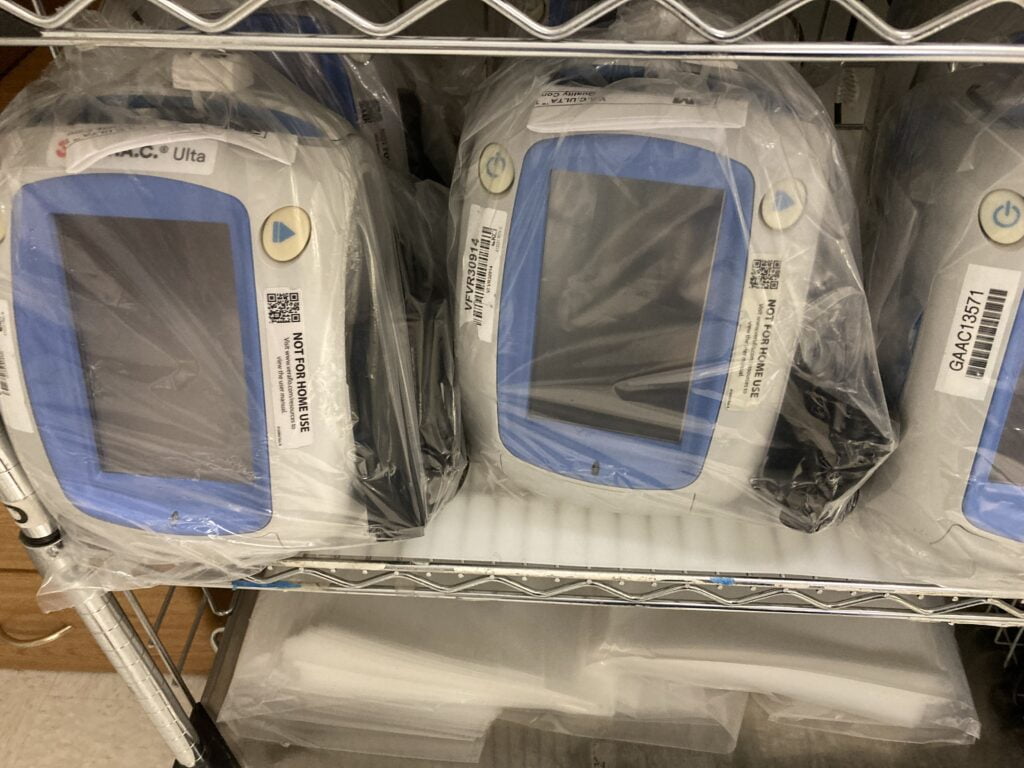
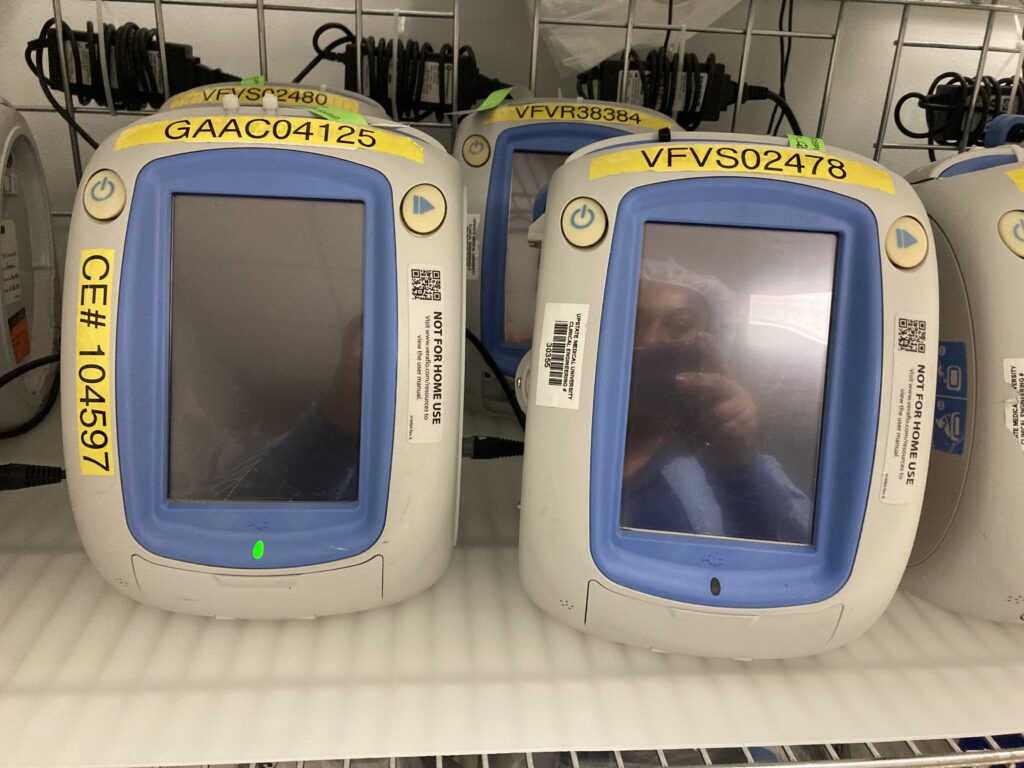
A wound vac is a negative pressure device that is used in wound closure and drainage. It provides a therapeutic vacuum-assisted closure to wounds. This therapeutic technique is aimed at promoting the healing of wounds while draining the excess fluids.
A wound vacuum system, also known as Negative Pressure Wound Therapy (NPWT), typically consists of the following components:
- Foam or Gauze Dressing:
- Placed directly on the wound, this absorbent material helps manage exudate and promotes a conducive environment for healing.
- Adhesive Film or Drape:
- Covers and seals the foam or gauze dressing, creating a barrier to maintain a closed and controlled environment over the wound.
- Drainage Tube:
- Extends from under the adhesive film to facilitate the removal of fluids (exudate) from the wound site.
- Portable Vacuum Pump:
- Connected to the drainage tube, this device creates negative pressure, helping to enhance blood flow, remove excess fluids, and promote wound healing.
- Collection Canister:
- Attached to the vacuum pump, it collects and stores the evacuated fluids from the wound.
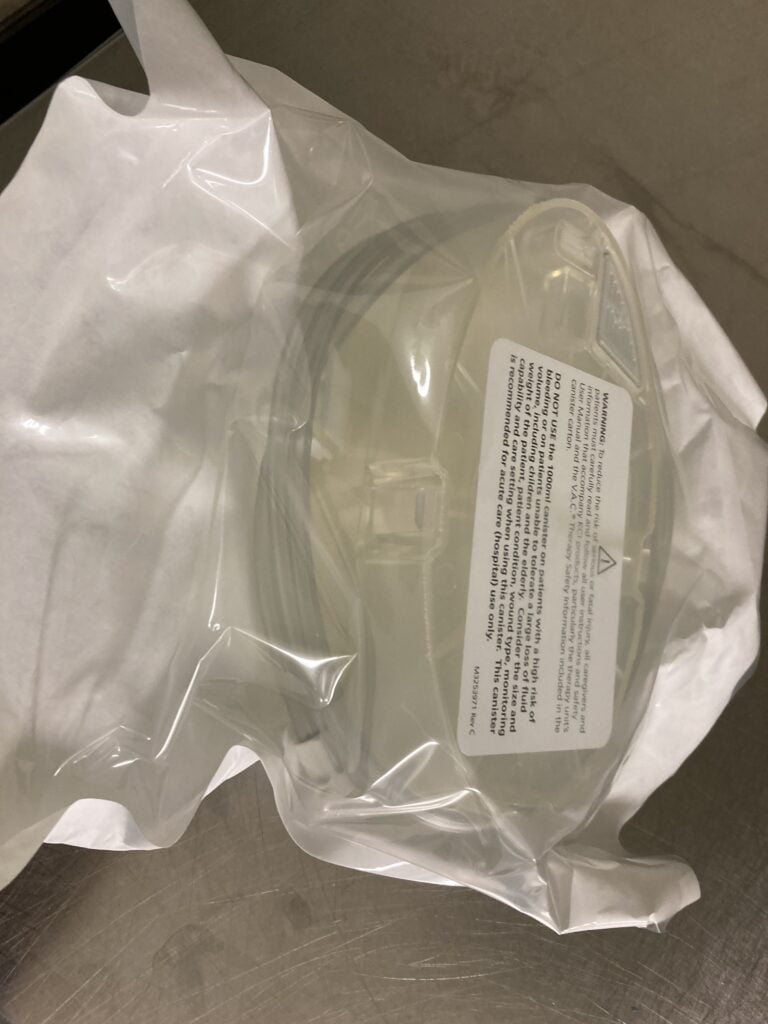
- Control Unit:
- Some systems may include a control unit that allows healthcare providers to adjust and monitor the pressure settings based on the specific needs of the wound.
- Power Source:
- Necessary to provide the required power for the vacuum pump and control unit.
These components work together to create an environment that supports the healing process by promoting tissue perfusion, reducing edema, and facilitating the removal of excess fluids from the wound. The Negative Pressure Wound Therapy system is a comprehensive solution for managing complex wounds and promoting optimal conditions for healing.
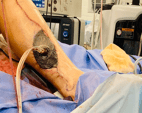
Primary purposes of a Wound Vac
The primary purposes of a Wound Vacuum (Negative Pressure Wound Therapy or NPWT) system are:
- Wound Healing Promotion:
- Enhances the wound healing process by creating an environment that supports cell proliferation, tissue perfusion, and angiogenesis.
- Exudate Management:
- Manages excessive wound fluids (exudate) by facilitating their removal through the vacuum system, reducing the risk of infection and promoting a cleaner wound environment.
- Edema Reduction:
- Helps reduce edema (swelling) around the wound site, which can improve blood flow and oxygenation to the tissues, aiding in the healing process.
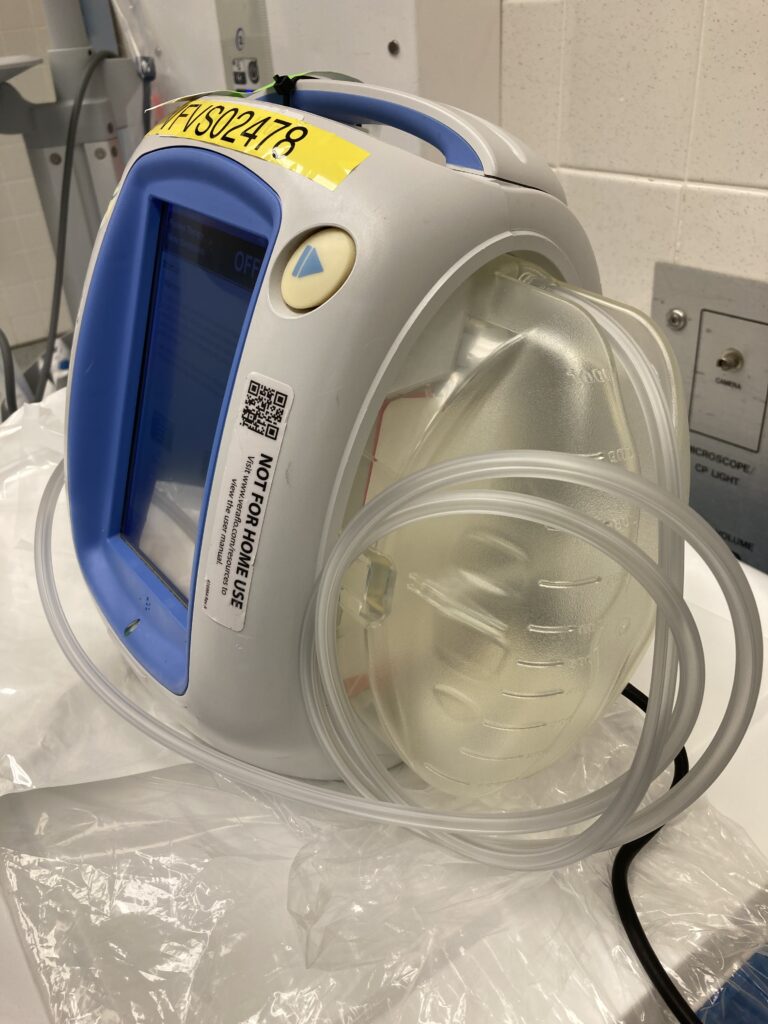
4. Stabilization of Wound Environment:
- Provides a sealed and controlled environment over the wound, protecting it from external contaminants and minimizing the risk of infection.
5. Granulation Tissue Formation:
- Promotes the formation of granulation tissue, a key component of the wound healing process, by encouraging the growth of new blood vessels and connective tissue.
6. Enhanced Blood Flow:
- Stimulates blood flow to the wound area, which can be crucial for delivering oxygen and nutrients necessary for tissue repair.

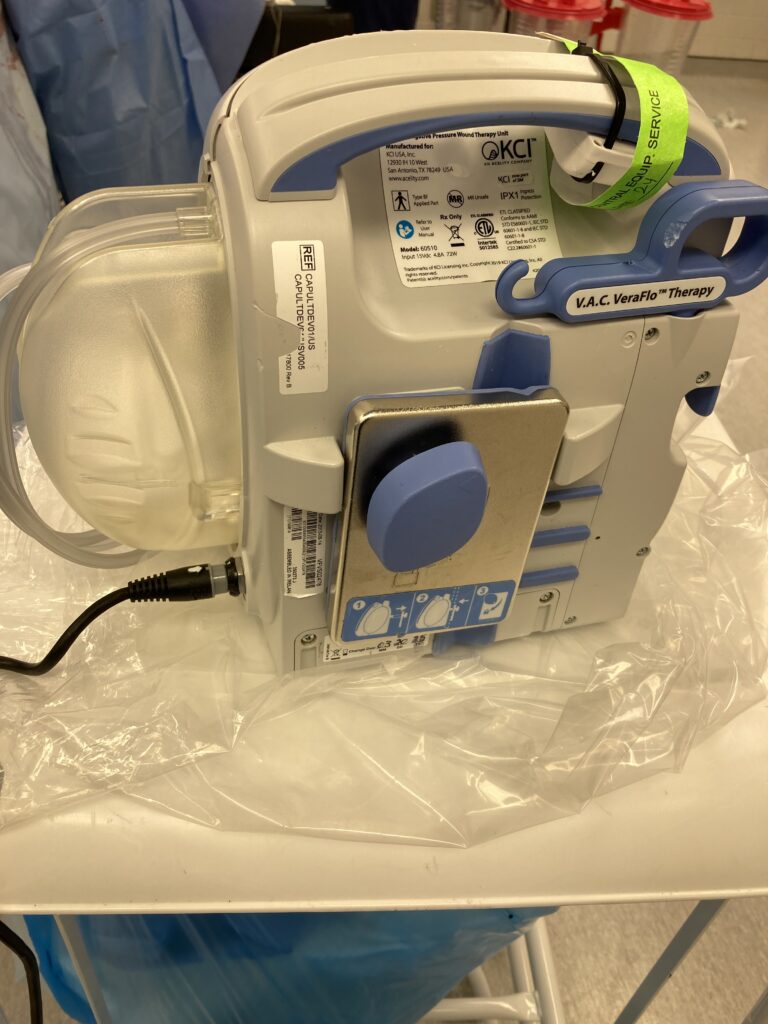
7. Reduction of Bacterial Load:
- Minimizes bacterial colonization within the wound through the removal of fluids and by creating an environment less conducive to microbial growth.
8. Minimization of Wound Complications:
- Helps prevent complications such as dehiscence (wound opening) and supports the overall management of challenging wounds, including chronic and non-healing wounds.
9. Patient Comfort and Mobility:
- Facilitates patient mobility by providing a portable system, allowing patients to move around while receiving continuous wound care.
10. Facilitation of Complex Wound Management:
- Used in the treatment of a variety of wounds, including surgical incisions, traumatic injuries, diabetic foot ulcers, and pressure ulcers, among others.
Wound Vacuum therapy is a valuable tool in wound care, offering a multifaceted approach to optimize conditions for wound healing and improve patient outcomes.
Surgical procedures and medical condition where a wound vac is used.

- Postoperative Wound Care:
- Abdominal Surgeries: After procedures such as laparotomy or abdominal hernia repair.
- Orthopedic Surgeries: Following joint replacement surgeries or spinal procedures.
- Cardiac Surgeries: After open-heart surgeries.
- Traumatic Injuries:
- Traumatic Wounds: In cases of severe injuries, such as crush injuries or high-impact traumas.
- Burns: For deep burns or wounds with extensive tissue damage.
- Chronic Wounds:
- Pressure Ulcers: Especially in bedridden or immobile patients.
- Diabetic Foot Ulcers: For individuals with diabetes who develop non-healing foot ulcers.
- Venous Leg Ulcers: In patients with chronic venous insufficiency leading to leg ulcers.
- Infections:
- Infected Wounds: When there is an increased risk of infection or to manage existing infections.
- Reconstructive and Plastic Surgery:
- Flap Procedures: In cases where tissue flaps are used for reconstruction.
- Skin Grafts: After skin graft surgeries to enhance graft adherence and reduce complications.
- Orthopedic Conditions:
- Osteomyelitis: In cases of bone infections where surgical debridement is performed.
- Non-union Fractures: To aid in the healing of fractures with delayed or non-union.
- Vascular Surgeries:
- Vascular Bypass Procedures: After surgeries to improve blood flow.
- Aneurysm Repairs: For postoperative wound management.
- Postpartum Wound Healing:
- Cesarean Sections: To aid in the healing of incisions after childbirth

How Hemovac works vs Wound vac Therapy.
| Hemovac | Wound VAC (Negative Pressure Wound Therapy – NPWT) |
|---|---|
| Mechanism: | Mechanism: |
| Utilizes a spring-like mechanism: The device has a compressible spring within its container. When the spring is compressed, negative pressure is generated. | Employs an electric pump or vacuum source to create negative pressure within a sealed dressing or sponge placed on the wound. |
| Collection of Fluids: | Collection of Fluids: |
| Primarily designed for collecting and removing excess fluids, such as blood or serous fluids, from a surgical site. | Not only removes excess fluids but also actively promotes wound healing by applying controlled negative pressure to the wound bed. |
| Components: | Components: |
| Consists of a flexible tube connected to a compressible container (reservoir) and an evacuation port for drainage. | Comprises a vacuum pump, tubing, and a wound dressing (sponge) that covers the wound. The tubing connects the wound dressing to the vacuum pump. |
| Application: | Application: |
| Commonly used in surgical settings, particularly after procedures where there is a need to control postoperative fluid accumulation. | Applied in various clinical situations, including surgical wounds, traumatic injuries, chronic wounds, and infections, to actively enhance wound healing. |
| Pressure Control: | Pressure Control: |
| The negative pressure generated is typically constant and relies on the mechanical properties of the spring within the device. | Offers adjustable and controlled negative pressure settings, allowing healthcare professionals to tailor the therapy based on the specific needs of the wound and patient. |
| Wound Healing: | Wound Healing: |
| Primarily focused on drainage of fluids to prevent hematoma and seroma formation, reducing the risk of infection. | Not only facilitates drainage but also promotes granulation tissue formation, angiogenesis, and overall wound bed preparation, leading to improved wound healing. |
| Usage Duration: | Usage Duration: |
| Typically used for a short duration postoperatively until drainage diminishes to an acceptable level. | Can be used over an extended period, depending on the wound’s characteristics and the stage of healing. |
It’s important to note that while both Hemovac and Wound VAC serve purposes related to wound management, they differ in their mechanisms and the extent to which they actively contribute to wound healing. Wound VAC, or NPWT, is a more advanced and versatile technology designed not only for fluid removal but also for promoting an optimal environment for wound healing.
🔑 Differences of the Hemovac and the Wound vac in the mechanisms and contributions to wound healing.
Hemovac
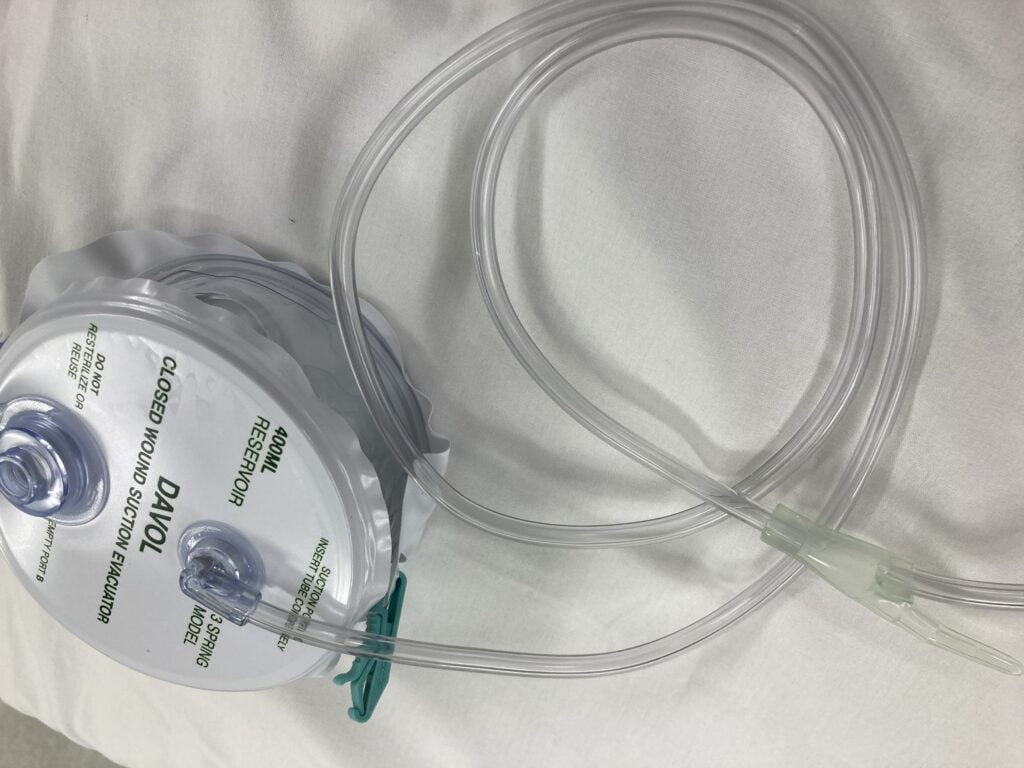
1.Primarily designed for the drainage of blood and fluids from a surgical site.
2.Operates on a bulb or spring mechanism that creates a vacuum, allowing the device to suction blood and fluids from the wound area.
3.Commonly used after surgical procedures where drainage of blood and fluids is necessary to prevent hematoma formation and aid in the healing process.
4.Typically uses a drainage tube to suction fluids directly from the wound site.
5.Provides continuous low-level negative pressure.
6.Primarily aids in preventing complications related to fluid accumulation, such as hematomas.
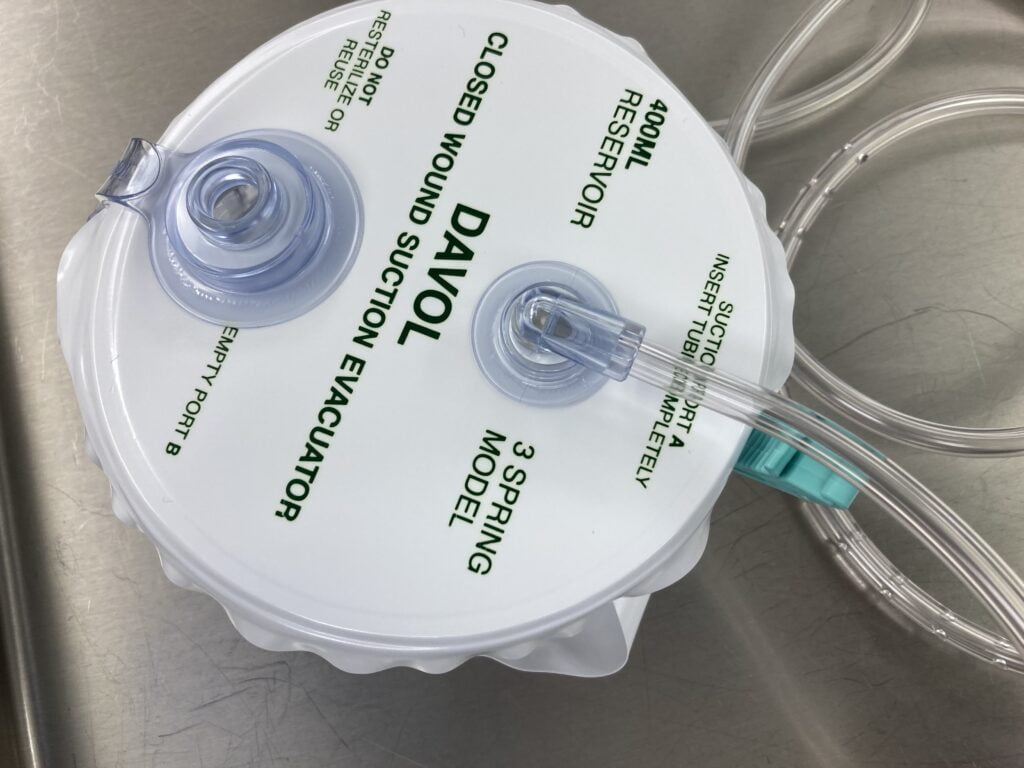
Wound Vac
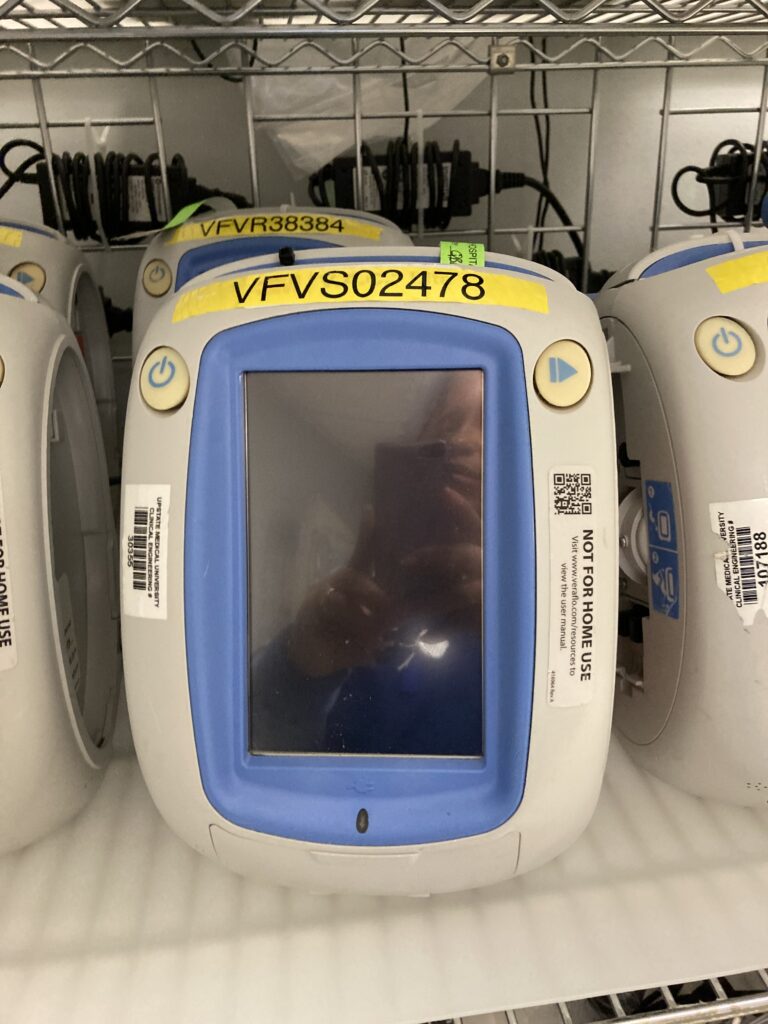
1.Primarily designed for the promotion of wound healing by applying negative pressure to the wound site.
2.Utilizes a controlled negative pressure (vacuum) to promote wound healing. A foam dressing is applied to the wound, and a sealed dressing covers the foam. The vacuum system removes excess fluids, reduces edema, and promotes granulation tissue formation.
3.Used for a variety of wounds, including chronic wounds, diabetic ulcers, pressure ulcers, and post-surgical wounds. It helps to accelerate wound closure, reduce infection risk, and improve overall wound bed conditions.
4.Involves the use of a foam dressing that conforms to the wound bed, providing a more even distribution of negative pressure.
5.Offers adjustable and controlled negative pressure levels, allowing healthcare providers to tailor the therapy to specific wound conditions.
6.Facilitates wound healing by promoting angiogenesis, reducing bacterial colonization, removing excess fluids, and encouraging the formation of granulation tissue.
While Hemovac is primarily focused on drainage of blood and fluids post-surgery, Wound Vac is specifically designed to enhance wound healing by applying controlled negative pressure to the wound bed. The differences lie in their mechanisms, applications, and contributions to the wound healing process.
How often should a Hemovac and Wound vac dressing be changed.
The typical choice for dressing with a Hemovac is a basic dry gauze dressing. These dressings are typically replaced on a daily basis or whenever there is leakage or if the dressing becomes dislodged.
A Wound vac on the other hand dressing is changed every 24 to 72 hrs.
The hemovac carries a evacuator that when filled is emptied when necessary.
🗝️Comparisons of the Hemovac and wound vac efficiency in terms of wound drainage.
| Hemovac | Wound VAC (Vacuum-Assisted Closure) |
|---|---|
| Functionality: Hemovac is a closed wound drainage system that uses negative pressure to remove fluids from the wound site. Mechanism: It operates based on a spring-loaded mechanism that creates a vacuum to draw fluids into a collection chamber. Applications: Hemovac is commonly used for drainage after surgeries, especially in orthopedic procedures. Advantages:Cost-effective compared to some other drainage systems. Simple and easy to use. Disadvantages:Limited in its ability to actively promote wound healing. May not be as effective in managing large or irregularly shaped wounds | Functionality: Wound VAC is a sophisticated system that provides controlled negative pressure at the wound site. Mechanism: It involves the application of a vacuum through a sealed dressing, promoting wound healing by removing excess fluids, reducing edema, and enhancing blood flow to the area. Applications: Wound VAC is widely used for chronic, complex wounds, open abdomen management, and cases where promoting granulation tissue is crucial. Advantages: Can actively promote wound healing by stimulating tissue growth. Effective in managing large and irregularly shaped wounds. Reduces the risk of infection by maintaining a closed and controlled environment. Disadvantages: Higher cost compared Requires expertise for application and management. |
Hemovac is a simpler and cost-effective solution for standard drainage after surgeries, while Wound VAC is more advanced, offering additional benefits in promoting wound healing, especially in complex and chronic wound cases. The choice between the two would be based on the characteristics of the wound, the clinical objectives, and available resources.
Sizes of Hemovac drain.
This drain comes in 3 sizes small, medium and large.
- Small Hemovac drain ,this size is ideal for small wounds and hold up to 400mls of fluids.

2. Medium Hemovac drain ,holds up to 600 mls of fluids and is the standard one mostly use for post surgical procedures.
3. Large Hemovac drain, holds up to 800 mls of fluids and are use for larger wounds .
Types of wound vac dressing
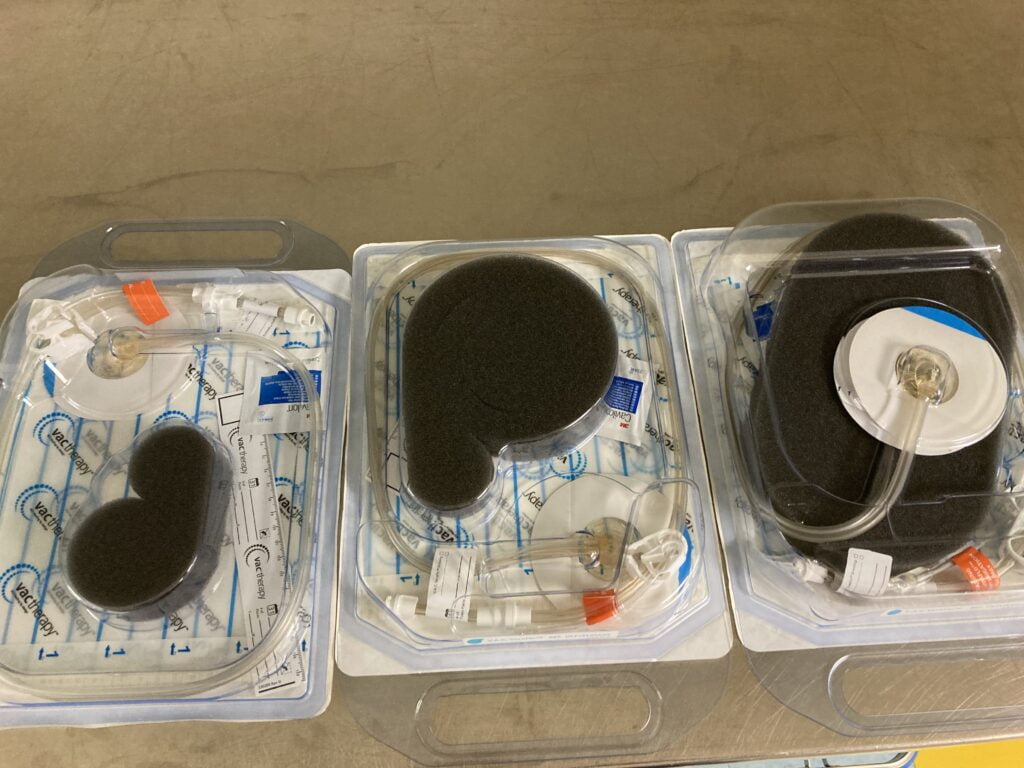
1. Small foam spiral dressing
Ideal for smaller wounds, price ranges from $500 t0 $650
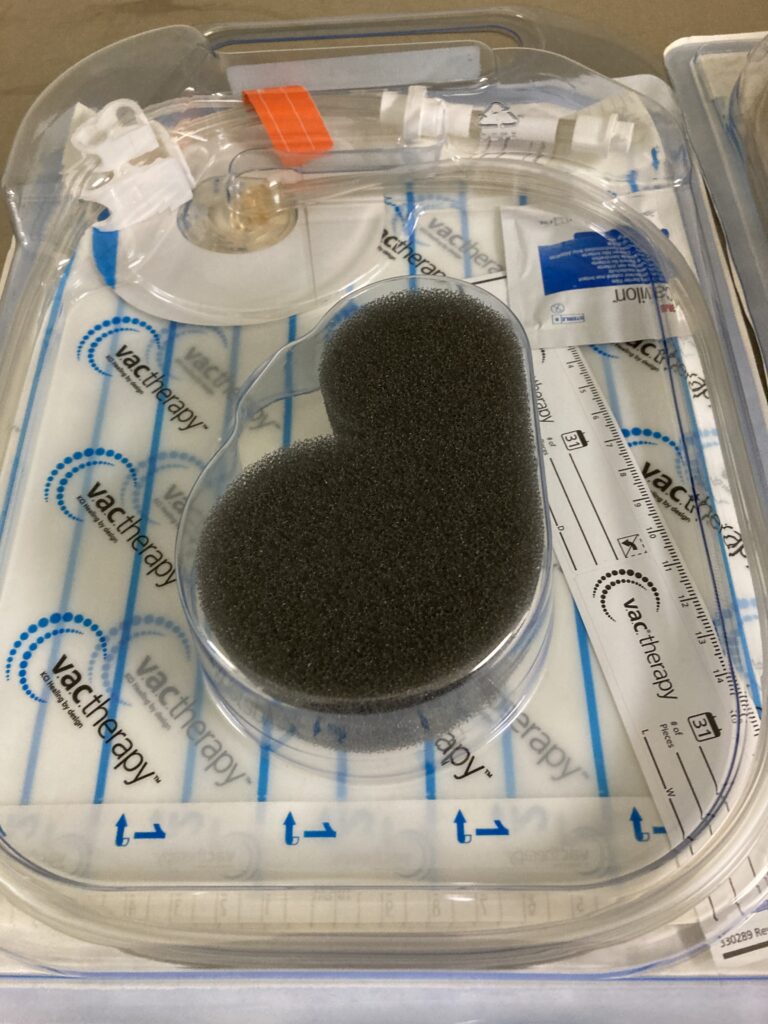
2. Medium foam Spiral dressing
head circumference of the sponge is wider for slightly bigger wounds. Price ranges from $600 to $800
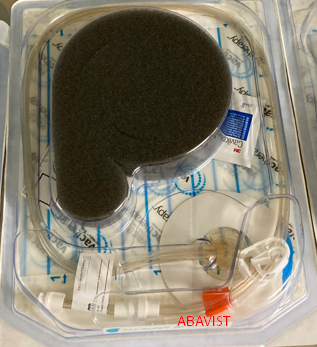
3. Large foam dressing
These foam can be cut to size of the wound. Price range $900 to $1100

4. White foam wound vac dressing
White foam is frequently applied to the wound bed in cases of exposed bone, tendon, or surgical hardware. This moist white foam serves to shield these delicate areas and alleviates patient discomfort during dressing changes.
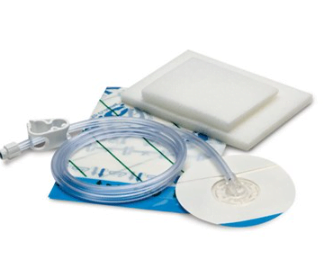
Can a Wound vac be use with Prevena Dressing?

The Prevena dressings are compatible and are design to work with the wound vac pump. The Prevena dressing comes in different sizes that are compatible with the wound vac medical device.
- Prevena Plus Customizable Dressing use on closed wounds and close surgical incisions.
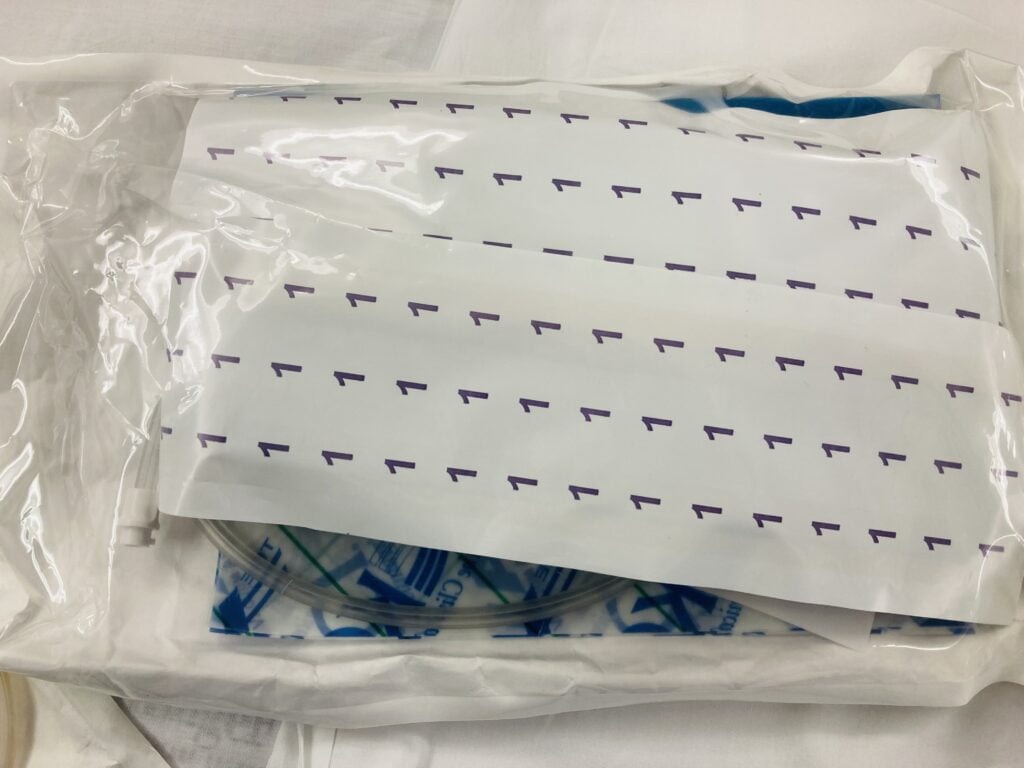
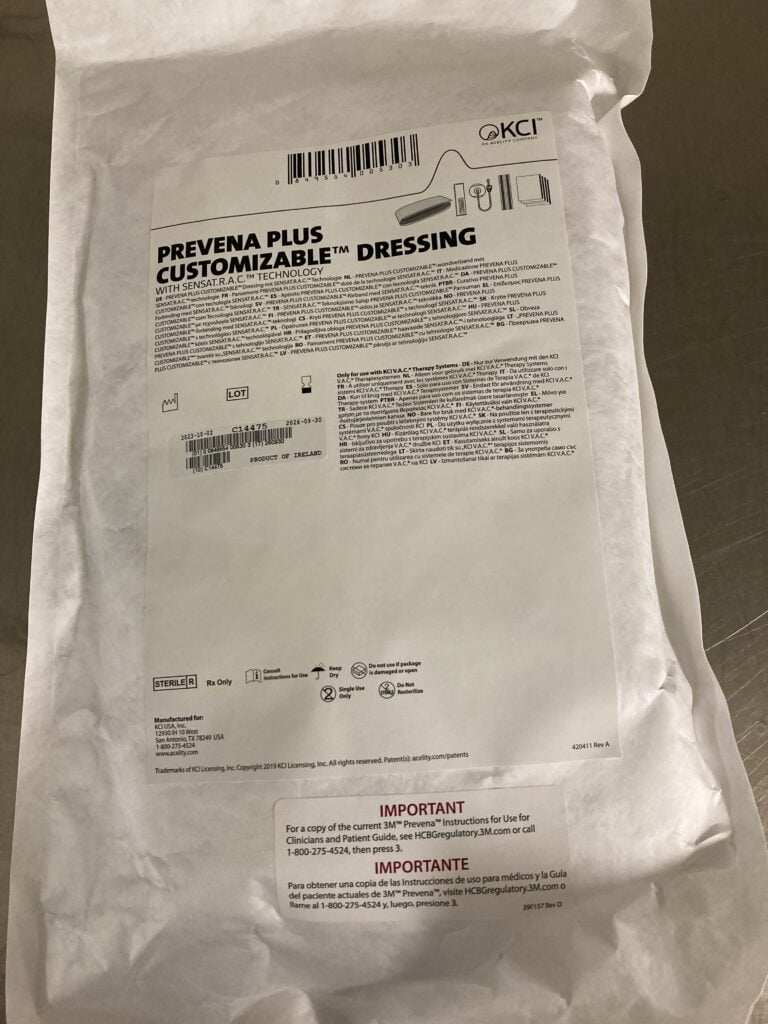
2. Prevena Peel and Place Incision Management System 13cm

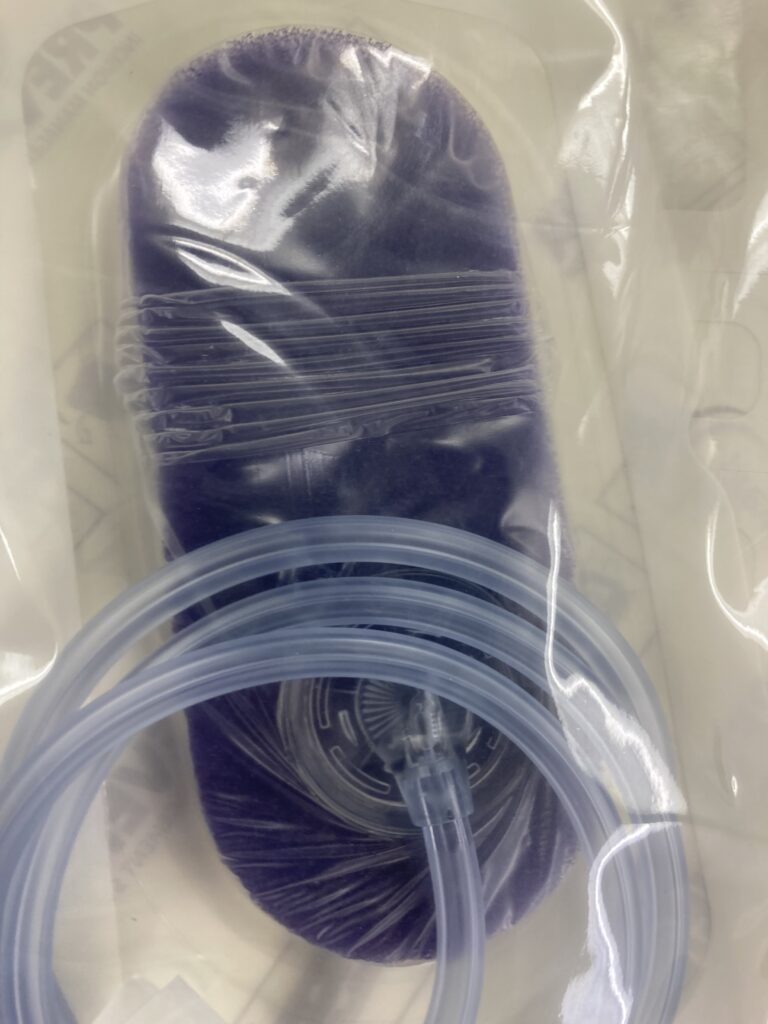
3. Prevena Peel and Place Incision Management System 20 cm
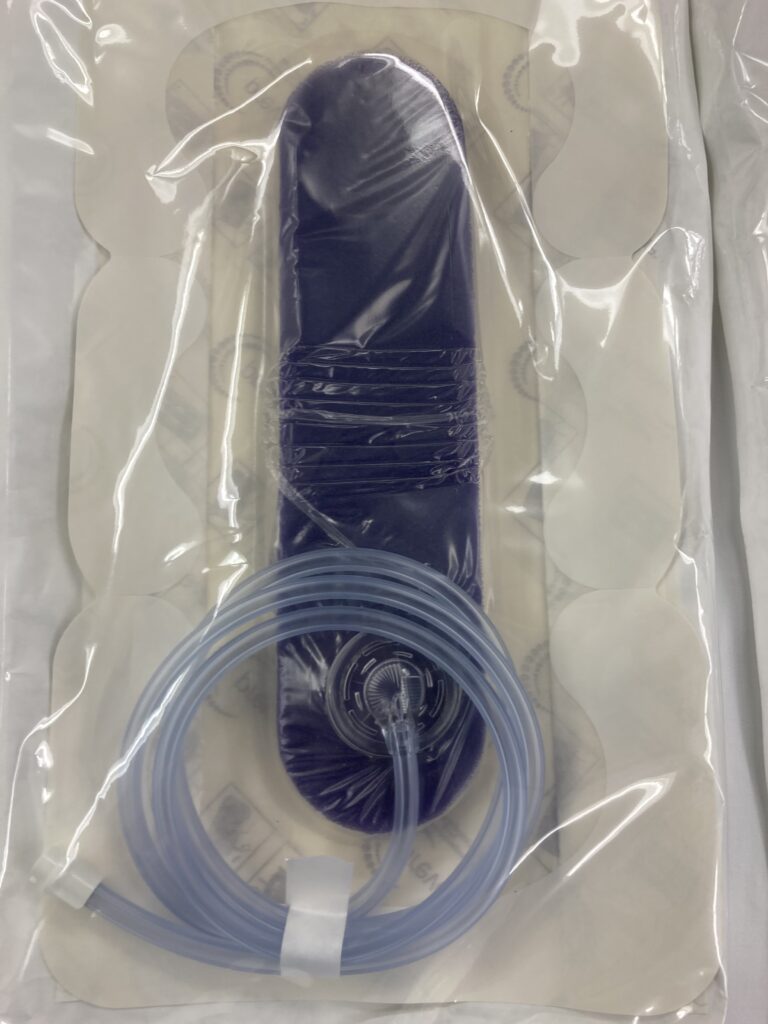
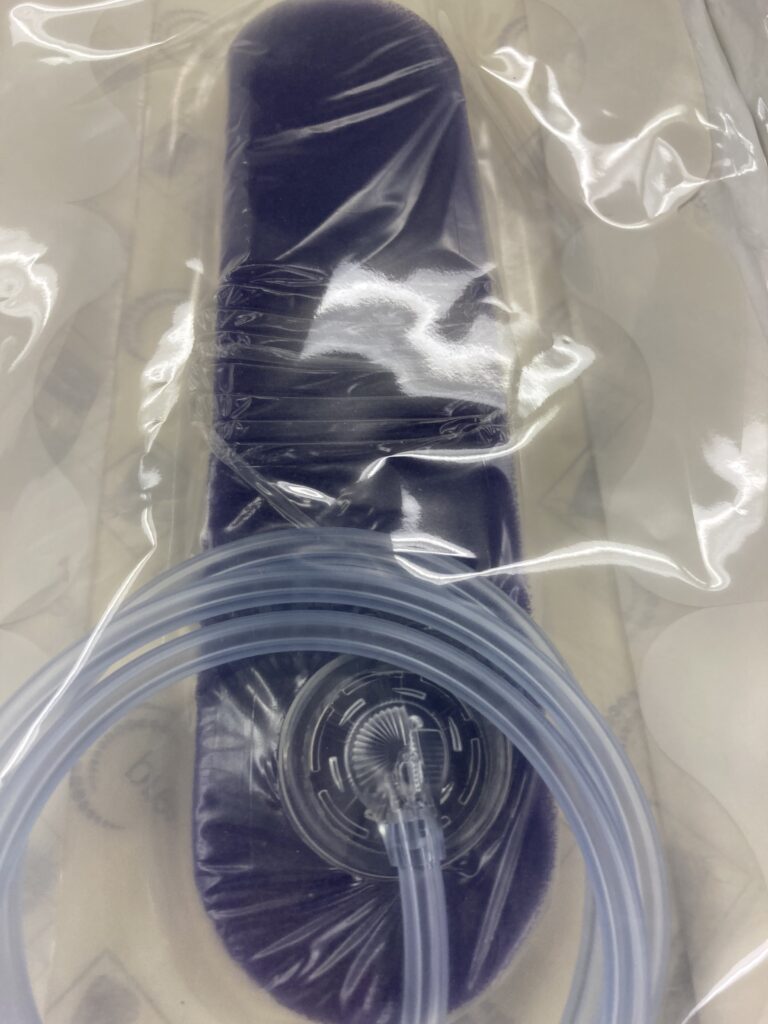
Can a wound vac be use with an Abthera dressing?
YES, Wound vac are made compatible with the Abthera dressing. This type of dressing is mainly use for abdominal wound management and closure.
AbThera Therapy is an approach that integrates a specialized foam dressing and drape with negative pressure therapy for the purpose of effectively managing open abdominal conditions.
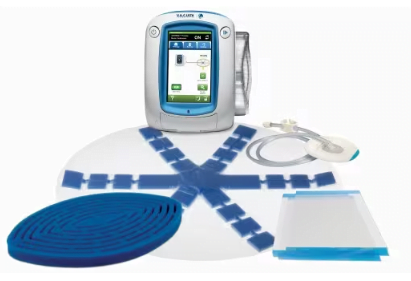
Abthera dressing
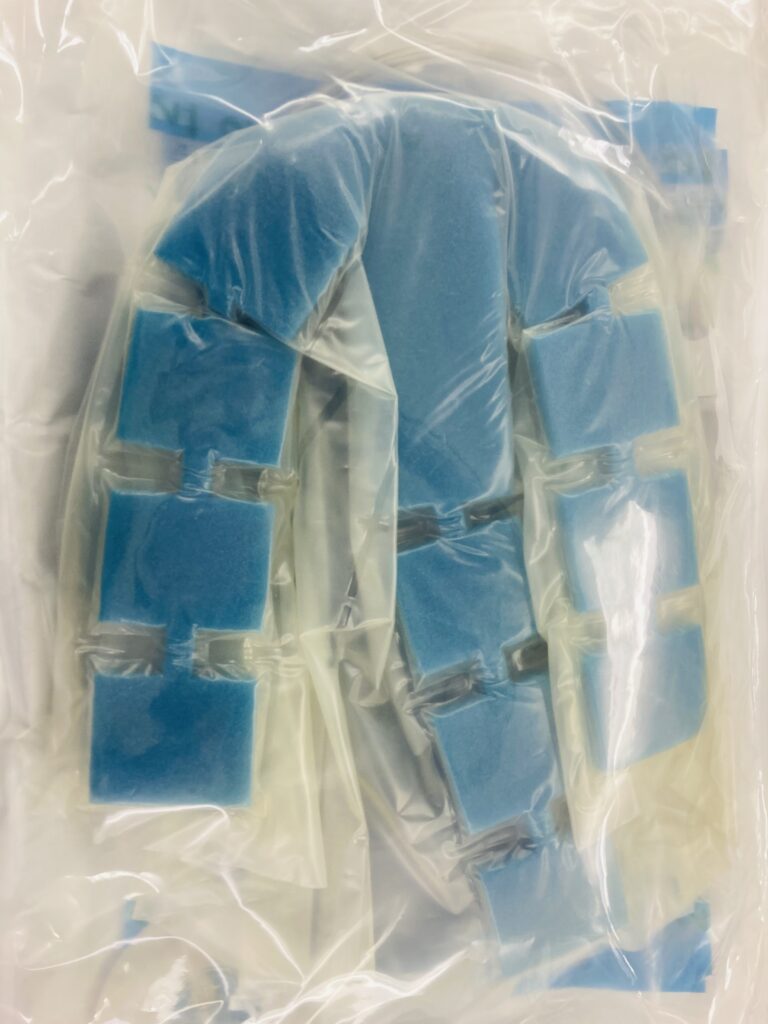
When is the Hemovac drain discontinue/removed?
The Hemovac drain serves as a temporary measure, utilized until the rate of fluid accumulation in your surgical wound diminishes sufficiently to facilitate the healing process. Once the Hemovac drain is gathering less than 30cc (1oz.) of fluid within a 24-hour period (unless your surgeon instructs otherwise), a nurse or doctor will remove the drain.
Key questions you ask yourself when Using a Wound VAC
- What is the expected duration for my wound to heal?
- The time it takes for your wound to heal varies based on factors such as your overall health, the size and location of the wound, and your nutritional status.
- Consult your doctor to get a personalized assessment and understanding of what to expect.
2. Can I Shower with the wound VAC ?
- Yes, you can disconnect the NPWT device to take a shower.
- However, it’s important to note that the device should not be turned off for more than 2 hours per day.
3. Can I take a bath?
- No, taking a bath is not recommended.
- Bath water can introduce infection to the wound, and immersion can potentially loosen the dressing on the wound.
4. Why is the device noisy?
- The NPWT device has moving parts, and as a result, it produces some noise during operation.
- If there is a leak or a poor seal, the noise may become louder, and an alarm may sound as an indicator of potential issues.
🔑 Critical Consideration when using a Hemovac drain.
- Proper Placement: Ensure that the Hemovac is correctly placed in the surgical site or wound. Proper positioning is crucial for effective drainage.
- Sterility: Maintain a sterile environment during the insertion and management of the Hemovac to minimize the risk of infection. Follow aseptic techniques and use sterile equipment.
- Secure Connection: Ensure a secure connection between the Hemovac tubing and the drainage reservoir. Regularly check for any leaks or disconnections to prevent fluid spillage.
- Patient Comfort: Monitor the patient’s comfort and assess for any signs of irritation or discomfort related to the Hemovac placement. Adjust the dressing or positioning if necessary.
- Regular Monitoring: Regularly monitor the amount and characteristics of the drainage fluid. Sudden changes in color, consistency, or volume may indicate issues such as bleeding or infection.
- Emptying and Recording Output: Regularly empty the drainage reservoir and record the output. This information is crucial for assessing the patient’s progress and identifying any potential complications.
- Preventing Blockage: Be vigilant about preventing blockages in the tubing. Ensure that the tubing is free from kinks or compression, as this can impede the flow of drainage.
- Clamping and Unclamping: Follow the healthcare provider’s instructions regarding clamping and unclamping of the Hemovac, especially during transport or when assessing the drainage output.
- Documentation: Keep accurate and timely records of drainage output, any interventions performed, and the patient’s response. This documentation is essential for communication among healthcare providers and for the continuity of care.
- Education and Communication: Educate the patient and caregivers about the purpose of the Hemovac, care instructions, and signs of potential complications. Maintain open communication with the healthcare team to address any concerns or changes in the patient’s condition.
- Healthcare Provider Orders: Follow the healthcare provider’s orders regarding the use of the Hemovac, including specific instructions for care, removal, or any additional interventions.
🗝️Important Considerations when using a wound vac
- Proper Application and Seal:
- Ensure proper placement of the wound vac dressing over the wound site.
- Achieve a secure seal to maintain the negative pressure required for optimal wound healing.
- Patient Assessment:
- Regularly assess the wound site for any changes in size, depth, or appearance.
- Monitor the patient for signs of infection, increased pain, or other complications.
- Monitoring Exudate Levels:
- Regularly check the canister for the amount and character of drainage.
- Adjust the suction levels as needed based on the type and volume of exudate.
- Dressing Changes:
- Follow the recommended schedule for changing the wound vac dressing.
- Use aseptic technique during dressing changes to minimize the risk of infection.
- Patient Education:
- Educate the patient on the purpose of the wound vac, expected outcomes, and the importance of adherence to the prescribed treatment plan.
- Provide information on recognizing signs of complications and when to seek medical attention.
- Skin Inspection:
- Regularly inspect the skin around the wound for any signs of irritation or damage due to the adhesive or dressing material.
- Address any skin issues promptly to prevent further complications.
- Mobility and Comfort:
- Ensure that the wound vac system allows for appropriate mobility and comfort for the patient.
- Address any concerns or discomfort related to the use of the wound vac.
- Documentation:
- Keep detailed records of wound measurements, exudate levels, and changes in the wound condition.
- Document any adjustments made to the wound vac settings or changes in the treatment plan.
- Collaboration with Healthcare Team:
- Communicate regularly with the healthcare team, including wound care specialists and physicians, to discuss progress and address any challenges.
- Emergency Preparedness:
- Have a plan in place for handling any technical issues with the wound vac system.
- Educate caregivers on troubleshooting steps and ensure they are aware of emergency contacts.
How to Apply a wound vac dressing
| Step | Instructions |
|---|---|
| 1. | Ensure the wound site is clean and dry. |
| 2. | Select an appropriate size of foam or gauze dressing to cover the wound adequately. |
| 3. | Place the dressing directly over the wound, ensuring full coverage and a snug fit. |
| 4. | Connect the dressing tubing to the vacuum pump or suction unit securely. |
| 5. | Turn on the vacuum pump and adjust the suction level as per the healthcare provider’s instructions. |
| 6. | Check for any leaks or gaps around the dressing and adjust as necessary to achieve a proper seal. |
| 7. | Secure the dressing in place with adhesive tape or other securing devices, ensuring it stays in position during movement. |
| 8. | Double-check the seal and suction to confirm proper application before completing the procedure. |
Resource
As an Operating Room Nurse I have work with the Hemovac and wound Vac. Most of my Information is Obtain from my work experiences.
https://www.ncbi.nlm.nih.gov/pmc/articles/PMC7950552/
https://www.swrwoundcareprogram.ca/Uploads/ContentDocuments/Pamphlet%20-%20Hemovac2.pdf
